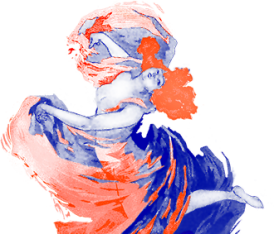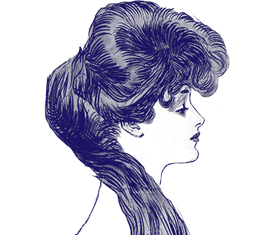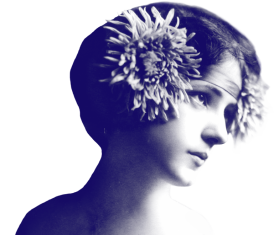HomeNews & Events2010August The Second Sex
Irene Gammel's The Second Sex by Simone de Beavoir, as published in the Globe and Mail.
During the 1980s, fresh out of high school, I embarked on a six-month adventure to Paris, teaching German and English to a 12-year-old girl and exploring the city of Balzac, Rodin and the American expatriates. Here, for the first time, I delved into Simone de Beauvoir's Mémoires d'une jeune fille rangée (Memoirs of a Dutiful Daughter), her 1958 memoir of rebellion against her Catholic and bourgeois upbringing, the compelling story of a girl choosing to embark on the life of an intellectual woman whose ultimate goal is freedom.

As a feminist icon and revolutionary thinker, Beauvoir famously rejected conventional marriage and motherhood. She left an indelible legacy with her novels, memoirs and essays, but it was her magnum opus, Le deuxième sexe (1949), that became the bible of feminism. Beauvoir passionately articulated her central argument that women have been objectified and defined only in relation to men in a massive critical analysis of misogyny over several millennia. The two-volume book was a model of erudition and philosophical prowess, rivalling, and arguably outdoing, the work of fellow existentialist Jean-Paul Sartre, with whom she shared a five-decade-long partnership.
First published in the United States in 1953, the English translation of The Second Sex was not only abridged, but also marred by errors and simplifications, as Judith Thurman explains in her excellent introduction to the new translation. Constance Borde and Sheila Malovany-Chevallier, American feminists residing in Paris, have now delivered the full text for the first time. It is poised to take its rightful place alongside feminist classics such as Mary Wollstonecraft's A Vindication of the Rights of Women and Virginia Woolf's A Room of One's Own.
The single most important advantage of this new translation is its completeness, combined with the translators' courage to transpose Beauvoir's existential language, thereby giving readers a sense of Beauvoir's channelling of Hegel, Marx and others However, their focus on fidelity to Beauvoir's style and syntax has produced some questionable translations. Thus the famous sentence from the opening of Volume II, “On ne naît pas femme: on le devient,” becomes in their somewhat literal translation, “One is not born, but rather becomes, woman,” inadvertently implying a universal womanhood that was not intended by Beauvoir.
Some readers may be daunted by the long, unabridged paragraphs, but the mountain of historical, literary, philosophical, biological and psychoanalytic evidence is offset by Beauvoir's precision and knack for picking epigrammatic quotations that make historical figures come alive, such as when she cites Dr. Johnson comparing women preaching to “a dog's walking on his hind legs. It is not done well …” Like a prosecutor, she builds her case, and it is fascinating to see how learned men have entrenched the female's “otherness” in political, theological and philosophical treatises. Beauvoir nails the culprits through their own words, citing the crass and the idiotic to expose its systematic denigration of women, such as Saint Augustine's “We are born between feces and urine” or Auguste Comte's view of femininity as “a prolonged childhood.” Drawing on French, British, American and countless classical texts in translation, she dismantles important myths such as the Mother, the Virgin and the Eternal Feminine, the archetypes of literature and art, in which the woman is always conceived in relation to man, either idealized as an intermediary to heaven, as Beatrice was for Dante, or denigrated as a shrewish and argumentative Xanthippe. Only Stendhal escapes with Beauvoir's esteem, as capable of writing the real woman.
The new translation includes 70 portraits of powerful women, including actresses, salonières, suffragettes and sovereigns, many of which were truncated or excised in the earlier translation. There are sensitive readings of Louisa May Alcott, Colette, Emily Dickinson, George Eliot, Dorothy Parke and others, as well as accounts of female development and sexual awakening. But Beauvoir is equally inclusive in cataloguing many male feminists: Diderot, Emerson, Lincoln, John Stuart Mill and so on.
The 38-year-old Beauvoir wrote The Second Sex in just 14 months, an incredible feat considering the massive research behind this text. The book grew out of a feminist essay, and it was her lover, American author Nelson Algren, who encouraged her to expand it in 1947, while Sartre was involved with another woman. Still, the intellectual relentlessness with which Beauvoir pursues women's subjugation and humiliation also hints at darker personal experiences that came to light after her death, and that raise questions about her honesty in dealing with the contradictions of some of her own life choices.
In the final chapter, The Independent Woman, Beauvoir reiterates that true autonomy is possible only through the woman's own work and financial independence. She continues: “It is an almost irresistible temptation for a young woman to be part of a privileged caste when she can do so simply by surrendering her body; she is doomed to have love affairs because her wages are minimal.” The sentence gains a disturbing resonance through disclosures made in Beauvoir's unexpurgated Letters to Sartre, published in 1992. The letters reveal just how unsavoury Sartre was in tying young women to himself sexually by setting them up and supporting them financially, sadly, with Beauvoir's help and full knowledge. This is what she calls the “servitude of masculine protection.” In the end, Beauvoir articulates a deep division. Either the intellectual woman must renounce “femininity” and thus lose part of her humanity or “to accomplish femininity, she is required to be object and prey.”
In light of what we now know about Beauvoir and Sartre's sexuality, this timely translation is bound to fuel discussion and a reconsideration of The Second Sex. Although Beauvoir had publicly denied her lesbian experiences, her letters confirm them, warranting a new look at the chapter The Lesbian, interestingly found in The Lived Experience section of The Second Sex. One cannot help but wonder whether there is a bit of the confessional embedded underneath the veil of academic discourse. When Beauvoir writes in wildly generalizing terms that man “takes pride in his sexuality only to the extent that it is a means of appropriation of the other,” does she not point her pen, more specifically, at Sartre, who by all accounts and in the face of all his crass womanizing, was a mechanical, unsophisticated and lazy lover (a few years into their relationship he stopped sleeping with Beauvoir, replacing sex with talk about his exploits, using their correspondence as an aphrodisiac). When the woman gets fed up trying to please the man, as Beauvoir writes, she takes “her revenge by playing the game with masculine weapons.” In The Second Sex, she did just that.












